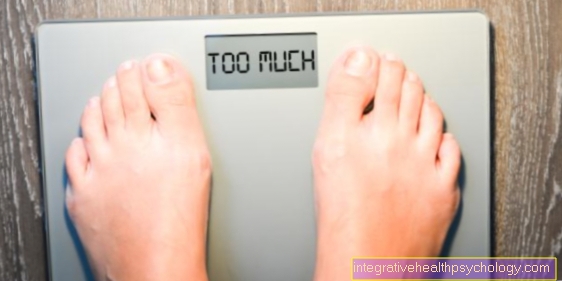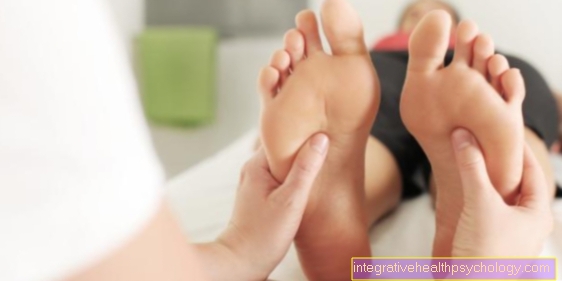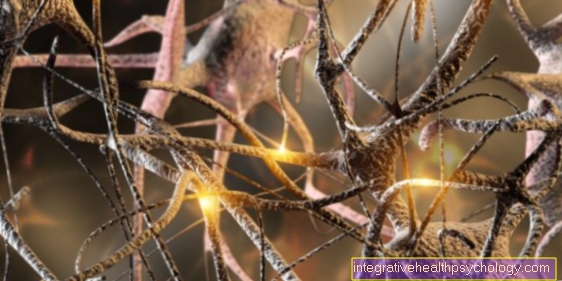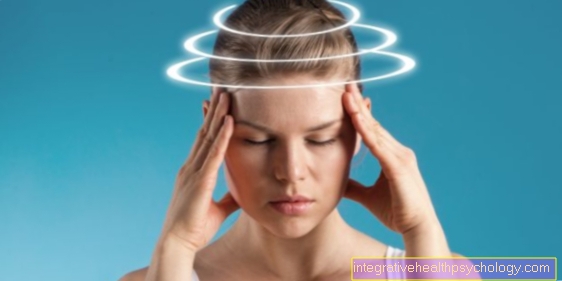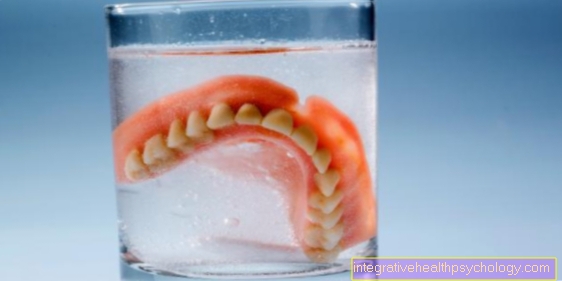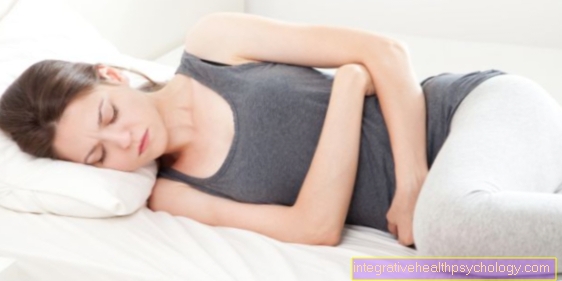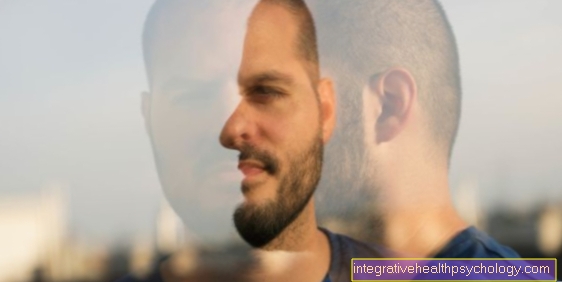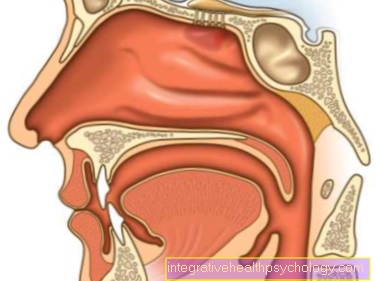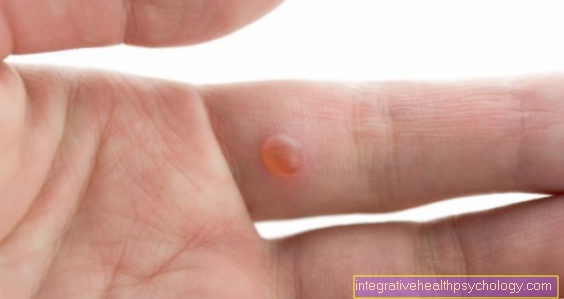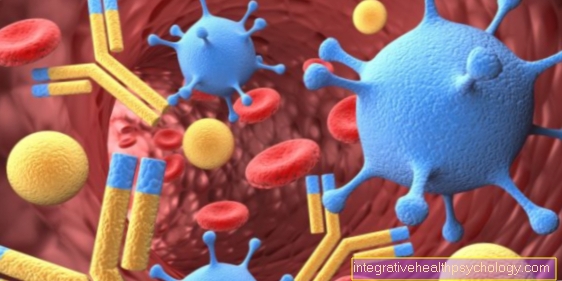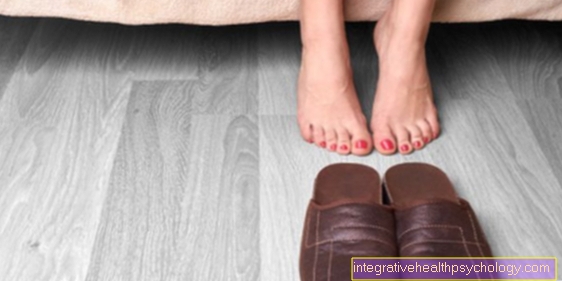Body aches
introduction

The term limb pain generally describes a certain symptomatology that is mainly dominated by pain in the arms and legs. A number of medical conditions and other causes can trigger the pain in the arms and / or legs. However, body aches and pains are most commonly associated with colds and flu. With the end of the causative disease, the unpleasant pain in the limbs usually also disappears. Appropriate therapy can help control symptoms during the illness.
Here it goes to: Why do you get body aches when you have a cold?
Symptoms
It is important to remember that body aches are not a diagnosis, but a symptom. Most of the time, other diseases, but also therapies, are the cause of the pain.
Usually the pain is perceived as an unpleasant feeling in the muscles and joints, which occurs when moving or at rest. The pain is usually described as pulling and occurs gradually. In many cases, pain in the limbs occurs in both arms and legs and this usually indicates an infectious disease, in most cases a cold.
The pain usually occurs in connection with other illnesses and is only a secondary symptom in addition to the other typical symptoms of a cold or flu. In addition to aching limbs, fever, a weakened general condition and headache are also often described.
Learn more about Fever with aching limbs.
If the pain is very severe and occurs without other typical cold symptoms, a doctor should be consulted in any case, who can rule out serious illnesses and treat the pain properly. In almost all cases, however, the pain only occurs for a few days and then disappears as the underlying condition subsides. Pain that occurs in the extremities for a long time should therefore be examined by a doctor.
How strong the pain is perceived individually depends on a number of different factors. Different diseases can cause body aches that are very difficult to bear, whereas other diseases only cause mild body aches. Depending on the person affected, the pain is often perceived very differently.
causes
A multitude of diseases can cause body aches and pains, the most common of which are infectious diseases. A cold often causes pain in the body, which is then perceived as aching limbs. But other viral diseases, such as the “classic” flu or an infection with the measles virus, often cause uncomfortable body aches. Especially when arms and legs as well as other parts of the body hurt at the same time, an infectious disease is usually behind the symptoms.
If infectious diseases have been ruled out by the attending physician, other diseases can also be the cause of pain in the limbs. Especially if there is no increased temperature along with the pain in the limbs, it must be suspected that another cause is causing the pain in the limbs.
A number of medications or therapies can cause pain in the limbs as a side effect.For example, taking so-called PDE-5 inhibitors can lead to the occurrence of unpleasant symptoms. Pain in the limbs is also typical with radiation therapy.
So-called degenerative diseases can also cause symptoms that are described as pain in the limbs. This includes above all diseases such as rheumatism or osteoarthritis. Gout can also cause pain in the limbs.
When nerves are damaged, it can also lead to aching limbs. It is typical, however, that only one leg or arm is affected and the pain does not appear all over the body.
Circulatory disorders, such as those caused by diseases such as diabetes mellitus, arteriosclerosis, or in smokers, can also cause pain in the legs.
There are a number of other rare diseases and syndromes that can be responsible for the symptoms. The pain is then mostly one-sided and stronger than it is normally described as a pain in the limbs.
In summary, it can be said that if generalized pain in the limbs occurs, i.e. in both arms and legs, in most cases an infectious disease is the cause of the symptoms. If the pain only occurs in one arm or leg, a number of different causes can be blamed. In these cases, a doctor should be consulted so that the cause can be found using diagnostic methods and the problem can be resolved.
Also read: Why do you get body aches when you have a cold?
diagnosis
Various diagnostic methods can be used to diagnose the underlying diseases of the limb pain. The most important diagnostic tool is the anamnese, so the patient interview. Other symptoms can be inquired about and different diseases can be excluded. Also the indication of the Duration the complaints as well as the Kind of pain is essential for an assessment of the disease. It is also important to specify other performed Therapies and taken Medicationwhich, as side effects, can possibly trigger the body aches. For these reasons, the anamnesis should take place in a targeted and detailed manner.
If no infectious disease that would explain the symptoms is found to be the cause of the medical history and physical examination, diagnostic imaging tests can follow. For example, nerve courses can be managed using a MRIs are well represented and thus possibly provide an indication of the origin of the pain.
A measurement of blood flow to the legs can identify a circulatory disorder in the legs.
therapy

Since body aches are not a disease but rather a symptom, the underlying should be used in therapy root cause never let the discomfort out of sight. The symptoms should only be treated if the cause of the limb pain is clearly known. Only then can serious illnesses be ruled out and the symptoms treated appropriately.
Pain in the limbs, which occur as part of an infectious disease such as a cold or flu, can be with Painkillers how Ibuprofen or Paracetamol be treated. Most of these pain relievers also have the effect of fever, which often occurs in the context of these diseases, to lower.
Pain in the limbs that cannot be assigned to a direct cause should not be treated yourself. Here it is worthwhile to see a doctor who can clarify the cause of the symptoms and thus recommend a therapy that is individually adapted.
forecast
The individual prognosis for limb pain depends on the causal disease. In general, chronic pain in the limbs, which is constant, is very rare. Most body aches and pains arise as part of another acute illness and then subside again as the illness progresses. Pain in the limbs does not always occur over the course of the disease. The symptoms can only appear at the beginning of a cold and almost completely disappear over time or at least take a back seat. The prognosis for body aches and pains in other diseases is very difficult to assess, as a number of different diseases can be responsible for the symptoms. For most diseases, the earlier the disease is diagnosed and therapy is initiated, the better the prognosis. For this reason, body aches of unknown cause should be taken seriously and a doctor should be consulted for clarification.
prophylaxis
Pain in the limbs can occur in the context of many diseases, which can be avoided in different ways. However, the most common cause of body aches and pains is a cold virus. The only prophylaxis to avoid body aches and pains in a cold is to avoid the cold itself. That's how it should be immune system Be empowered and personal Hand hygiene be respected. Large crowds can also promote the spread of these pathogens and should be avoided if possible, especially during the critical times of the year.
Pain in limbs with fever
Aches and pains in the limbs combined with fever suggest the presence of an infectious disease. Especially diseases like one cold, but also the infection with measles or the real one Flu virus can cause both fever and pain in the limbs. Also the Early summer meningoencephalitis, better known as TBE, can cause fever and severe pain in the limbs. This is an infectious disease that ticks can transmit to humans.
It is best to have a doctor examine severe pain in the limbs with a simultaneous fever so that a suitable and meaningful therapy can be initiated and the disease cured.
Body aches and pains without fever
Body aches that occur without a fever can be caused by a variety of different diseases. So can causes of a simple aching up to one Tumor disease or Nerve damage behind it. It is important that severe and long-lasting pain in the limbs is examined by a doctor and that serious illnesses can be ruled out or treated properly.
Self-therapy should only be carried out for a few days, if at all, for pain in the limbs. Pain medication can mask the symptom of limb pain, but cannot treat or cure the underlying condition. Targeted therapy can only be started with a correct diagnosis of the cause of the symptoms.
Joint pain in the leg
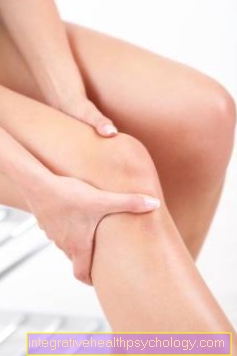
Aching limbs that only affect the legs usually speaks against the presence of an infectious disease. If only both legs or only one leg is affected by limb pain, a number of different diseases can be the cause.
For example Circulatory disorders be the cause of the discomfort in the legs. In this case, the complaints can be one-sided, but also occur on both legs and are above all after exposure, like a longer walking distance, noticeable.
But also diseases like rheumatism, arthrosis or gout can cause discomfort in the joints of the leg and then manifest in the form of aching limbs.
Nerve damage or inflammation of the nerves can also affect the legs and cause discomfort.
cold
The most common cause of body aches and pains is infection with one Cold virus Not every virus causes body aches and pains, and not every person experiences body ache symptoms in the same way. Still, the most common cause of the symptom of body ache is a cold. Body aches and pains that occur with a cold can besides the arms and legs as well the rest of the body affect. Typical for body aches that occur as part of an infection with a cold virus is the infestation of the whole body with the symptom. If body aches and pains occur and a cold is suspected, other typical symptoms of the common cold may confirm the diagnosis. A drug that combats the cause cannot be recommended. warmth, Massages and adequate hydration however, they can provide some relief from body aches and pains associated with a cold.
What to do with aching limbs
Since body aches are basically only a symptom of a disease or other cause, the cause of the symptoms should first be found. If the discomfort occurs as part of a cold, the pain can begin with itself Pain medication be treated. However, other methods and remedies can be used that may provide relief. So can warmth in the form of calf compresses or warm pillows to improve the symptoms. Also Massages can provide some relief for a short time.
However, if there is no improvement after a few days, a doctor should be consulted for clarification. This also applies if the cause of the limb pain is unknown. In order to rule out serious illnesses, a visit to the attending physician is urgently recommended in these cases.
Home remedies
There are some home remedies that may help relieve pain in the limbs. It is important to note that home remedies cannot treat the causes of the limb pain, but only the symptom of the pain. Popular home remedies that are used for aching limbs are leg wraps, which can be placed around the legs or arms. A hot water bottle (caution: not too hot) can also be used for a certain period of time to relieve pain in the limbs. For some, a warm bath also helps to improve symptoms. Chicken broth can also improve the body aches a little in some cases due to the fluid intake and the electrolytes it contains.
Find out more about the topic here: Calf wrap against fever
move
Aching limbs can radiate to the back in some cases. The lumbar spine and the transition from the spine to the hip are often affected by pain in the limbs. The neck area is also often affected by pain in the limbs. Particularly in the case of pain in the limbs that occur as part of an infectious disease, in addition to legs and arms, the back area is also affected by the pain. A massage and warmth can provide relief in this area. Of course, pain medication can also temporarily relieve symptoms of pain in the back.
Also read the article: Fever and back pain.

